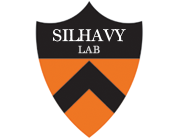Membrane biogenesis and signal transduction
All cells have subcellular compartments that are bound by lipid bilayers, and this three-dimensional organization is essential for life. If we consider lipid bilayers themselves as compartments, then Gram-negative bacteria, such as Escherichia coli, have four distinct subcellular locations: the cytoplasm, inner membrane (IM), periplasm, and outer membrane (OM). The noncytoplasmic compartments are collectively termed the cell envelope. We wish to understand cellular assembly, in particular, the process of OM biogenesis. The OM is an asymmetric lipid bilayer containing phospholipids in the inner leaflet and lipopolysaccharide (LPS) in the outer leaflet. Membrane spanning outer membrane proteins (OMPs) typically assume a beta-barrel conformation. All OM components are synthesized in the cytoplasm or the IM and therefore, OM biogenesis requires the transport of these molecules across the cell envelope for assembly at their final cellular location. Strikingly, these assembly processes occur outside the peptidoglycan cell wall in an environment that lacks an obvious energy source such as ATP. We use a combination of genetics, biochemistry, and bioinformatics to identify and characterize the cellular machinery required for these assembly reactions. We also study the signal transduction systems that monitor the integrity of the cell envelope and regulate the production of effector proteins that combat stress.
The OM is an effective permeability barrier and because of this organelle Gram-negative bacteria are almost always more resistant to antibiotics than are Gram-positive bacteria. The essential OM assembly components we have identified represent attractive new drug targets. Indeed, these targets are accessible at the cell surface and thus not protected either by the OM barrier or by efflux pumps. But what is particularly intriguing is that even if they did not ki inhibitors would disrupt the OM barrier rendering strains more sensitive to existing antibiotics and thus could be especially effective in combination therapies. The more we learn about the OM barrier and how it is made, the more rational and sophisticated our approaches to find small molecule inhibitors.

